Harri alternatives: 3 Key Takeaways
- OysterLink is gaining traction with a 400,000+ hospitality talent pool.
- Indeed and Glassdoor remain top platforms but require paid promotions ($5–$150/day).
- Platforms like Qwick and Upshift charge 40–50% markups on hourly pay, offering flexible hiring but at a premium.
Harri alternatives are in high demand for hospitality businesses that need more flexibility, better pricing, or specialized hiring tools.
This guide breaks down the best Harri competitors and what makes them stand out in 2024.
What is Harri?
Harri is a human capital management (HCM) platform that offers a variety of other useful features such as recruiting, onboarding, tracking and payroll.
In fact, businesses use this platform to oversee their entire workforce operations.
While this is excellent for some companies that are looking to have everything in one place, Harri might not be the best choice for those who want to focus on one area.
To make the best decision for your business, check out some of Harri's alternatives in the list down below.
Best Alternatives to Harri
1. OysterLink
.jpg)
OysterLink is a relatively new player on the market.
However, despite that, the platform has access to over 400,000 professionals and is becoming increasingly popular.
For Employers
If you’re a recruiter looking to find talent for your establishment, OysterLink offers some solid value.
You can take advantage of their professionally written job descriptions to help advertise your vacancy and attract high-quality applicants.
It's a handy resource for reaching the right candidates efficiently.
It’s estimated that they have around 400,000 talents in their user base.
OysterLink may have fewer users than larger sites, but its strength lies in its focus on high-quality, industry-specific talent.
For Job Seekers
As a job seeker, you have a chance to apply for the desired job directly through the platform.
Next, you can also find out more about your workplace rights and dive deeper into different labor laws in all states across the U.S.
OysterLink also offers a super handy paycheck calculator so you can estimate the exact amount of money you’ll be taking home after taxes.
Pros:
- Posting a job starts from $150
- Hundreds of free job descriptions
- High-quality job applicants
- Useful tools and resources (paycheck calculator, etc)
Cons:
- The relatively small user base in comparison to other major platforms
2. Indeed
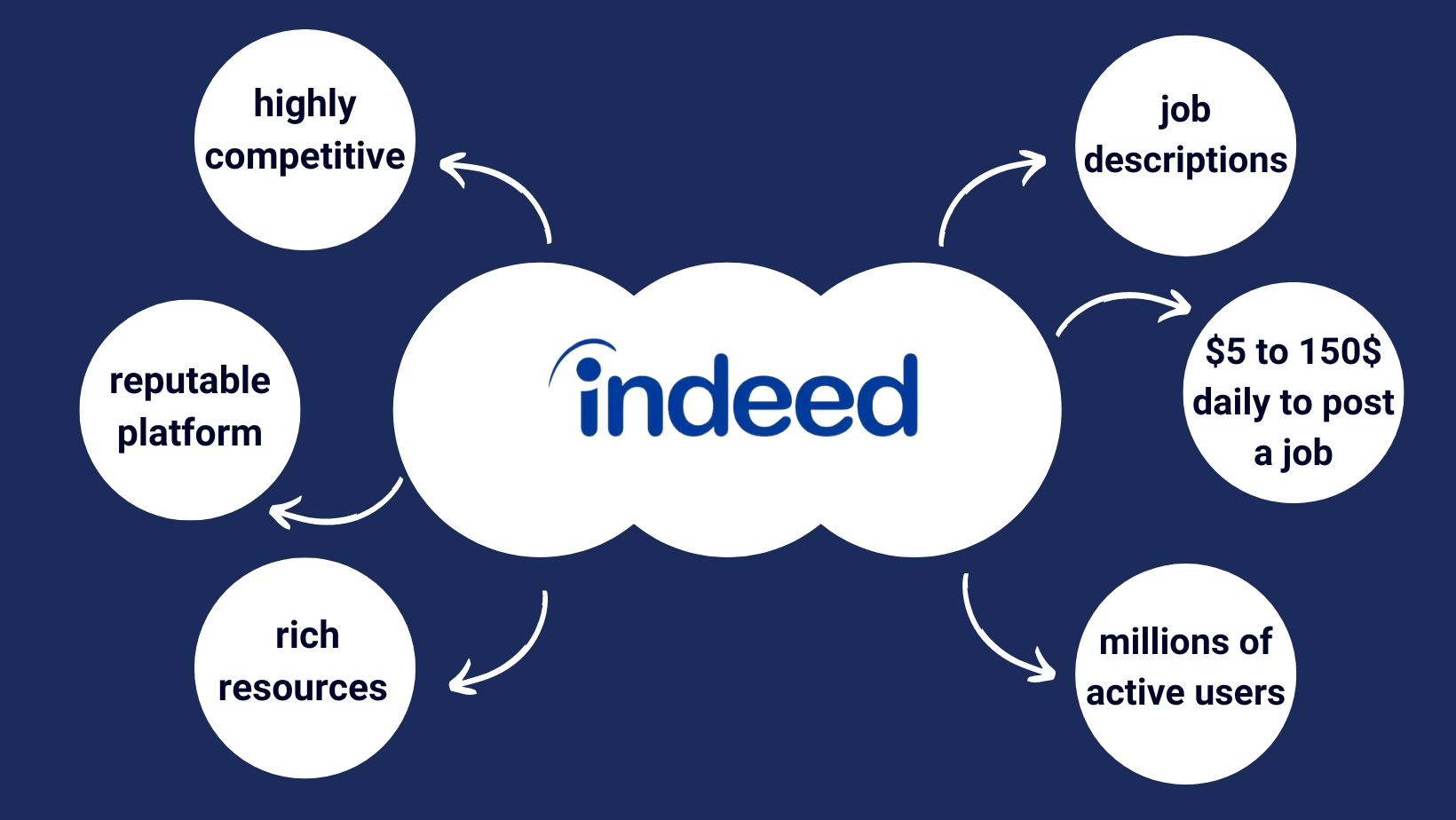
Indeed is one of the world’s most recognized global hiring platforms.
They’re using AI technology to match employers with job seekers based on requirements and skills.
For Employers
As one of the leading platforms in the industry, Indeed has extensive resources for employers.
For example, they provide recruiters with pre-written job descriptions, interview guides and employer events all around the world.
These features are great because they can save busy professionals some valuable time while looking to hire the right candidate.
However, in order for applicants to see your job post, it’s not enough to merely advertise it.
Although it’s technically possible to post a job for free, this is not recommended because Indeed is a highly competitive platform.
So, to make your ad stand out, you’d have to pay anything from $5 to $150 on a daily basis.
For Job Seekers
As a job seeker, you can create a profile on Indeed for free.
However, bear in mind that you’d still need to fill out extensive application forms when applying for jobs.
You can also use most of the resources they offer without any extra charges.
This includes sections like career advice, company reviews and improving your resume.
The biggest downside of Indeed is probably how competitive it is.
To land a job, you’ll have to stand out among millions of applicants.
Also, you’d have to invest considerable time filtering out fake job offers as Indeed also attracts a variety of lower-quality job listings.
Pros:
- Well-established platform
- Rich resources for employers and employees
Cons:
- Highly competitive
- Sponsored posts cost up to $150 a day
- Filling out extensive application forms
- Time-consuming to sift through job listings
3. DisabledPerson
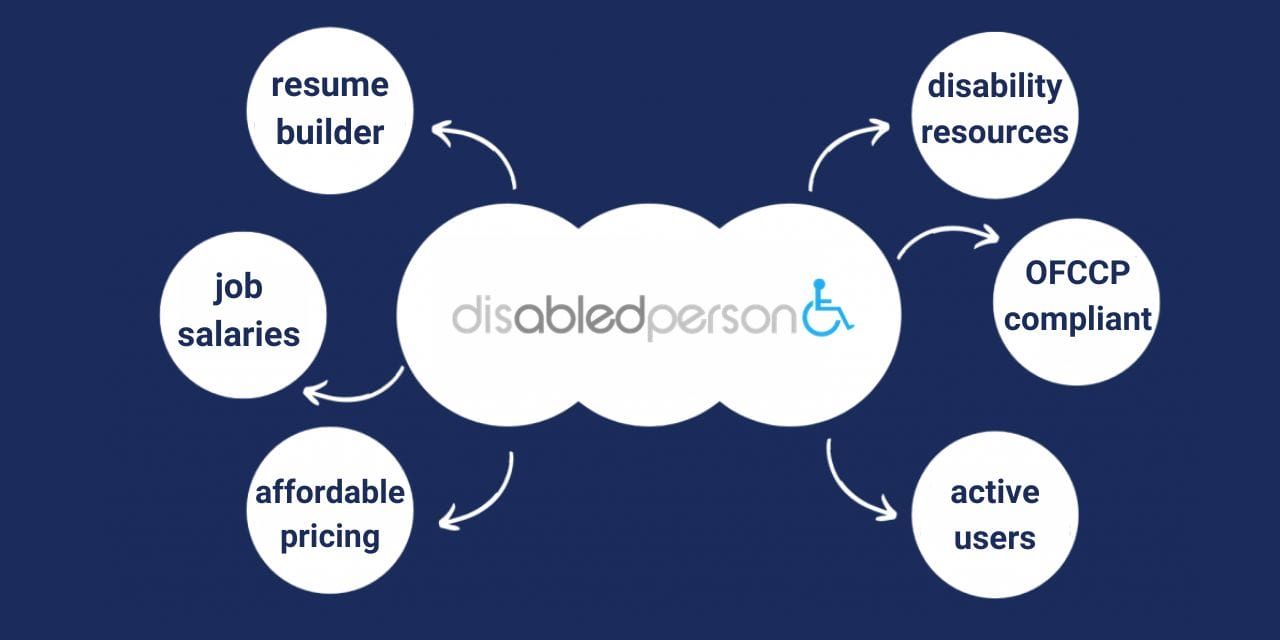
DisabledPerson.com is a niche job board specifically designed to connect employers with talented individuals living with disabilities.
Their mission is to provide equal employment opportunities and help employers diversify their workforce.
For Employers
DisabledPerson.com offers employers access to a targeted pool of qualified candidates who identify as having disabilities.
With its focus on inclusivity, the platform is ideal for businesses looking to prioritize diversity, equity and inclusion in their hiring process.
Employers can post job listings and leverage the platform’s audience to fulfill their hiring needs.
Additionally, DisabledPerson.com provides resources on hiring individuals with disabilities, which can help businesses foster an inclusive workplace.
However, since it’s a niche platform, the audience size is smaller compared to mainstream hiring platforms.
For Job Seekers
DisabledPerson.com enables individuals with disabilities to create profiles, search for job opportunities and apply directly through the platform.
It also features career resources such as resume tips, job search guidance and educational content tailored to overcoming common employment challenges.
While the focus on inclusivity is a standout benefit, the number of job postings may be more limited compared to general platforms like Indeed.
Additionally, some listings may redirect to external sites, requiring extra steps in the application process.
It's still an invaluable resource for people with disabilities looking for a job.
Pros:
- Focused on inclusivity and accessibility
- Provides specialized resources for job seekers with disabilities
- Supports employers in meeting diversity and inclusion goals
Cons:
- Smaller audience compared to mainstream platforms
- Limited number of job postings
4. 100Hires
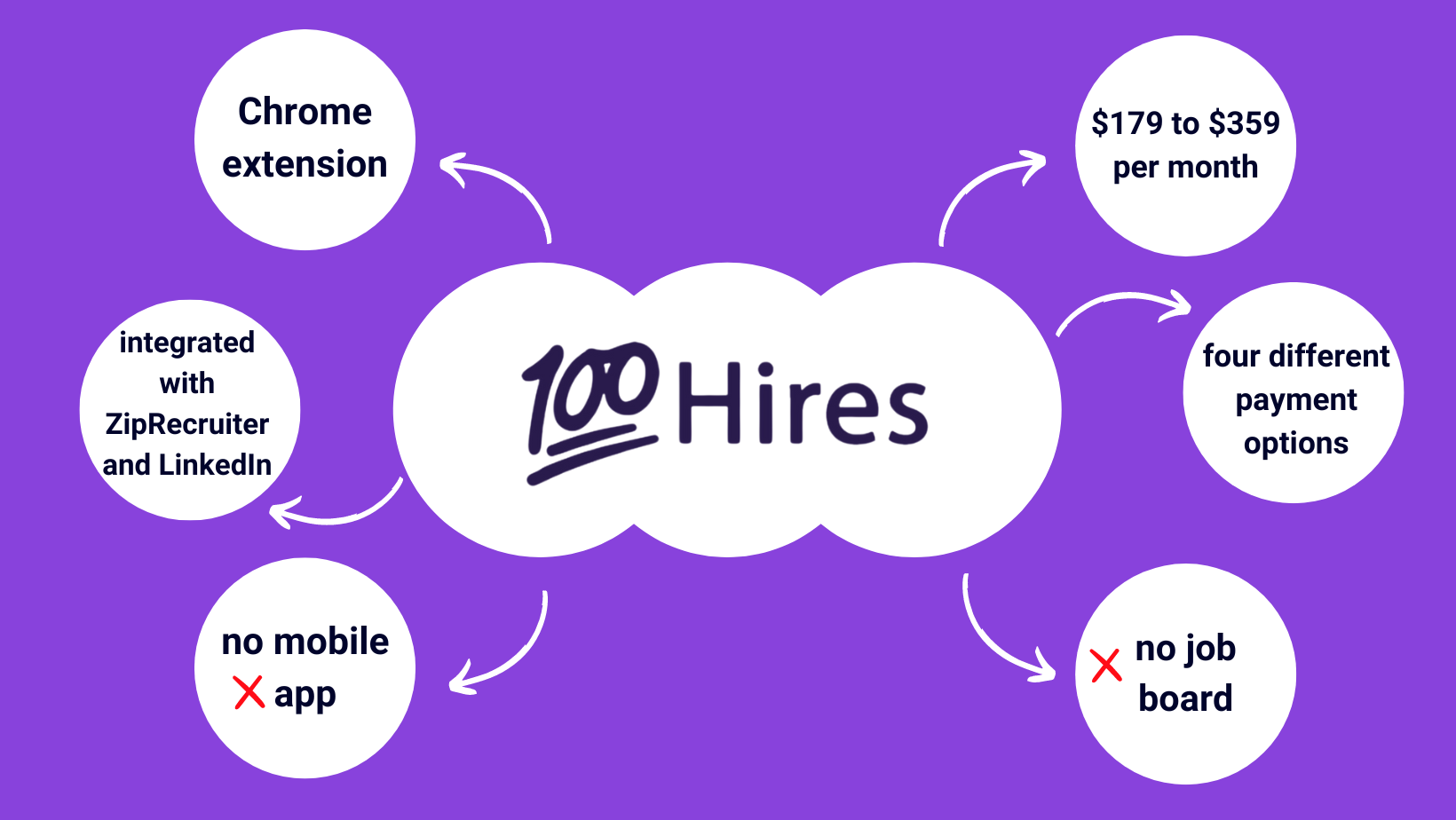
100Hires is a recruitment software that’s integrated with some of the major platforms on the markets, such as ZipRecruiter and LinkedIn.
Employers get to use a variety of screening tools to find, interview and onboard job applicants.
For Employers
100Hires comes with a Chrome extension that recruiters can use to browse through jobs on any major platform.
This is a very handy feature for employers as it enables them to do more with fewer clicks (and without changing the platforms).
Even though they offer a free trial and one free plan, a monthly package can cost anything from $179 to $359.
Their pricing model is not fully transparent as you’d have to contact the vendor directly in case you’re interested in buying the Enterprise version.
All these offers don't include mobile apps since they haven’t launched them just yet.
For Job Seekers
As a job seeker, you won’t be able to create a profile or look for jobs on 100Hires.
Instead, the employers will find you (provided that you have a profile on some of the major platforms).
The lack of this specific feature renders the 100Hires software useless for candidates.
Pros:
- Integrated with major platforms like ZipRecruiter and LinkedIn
- Offer four different payment options
Cons:
- Monthly packages cost from $179 to $359
- Non-transparent payment plan for Enterprise
- They don’t have mobile apps available
- Tailored for employees/recruiters only
5. Dayforce HCM (formerly Ceridian)
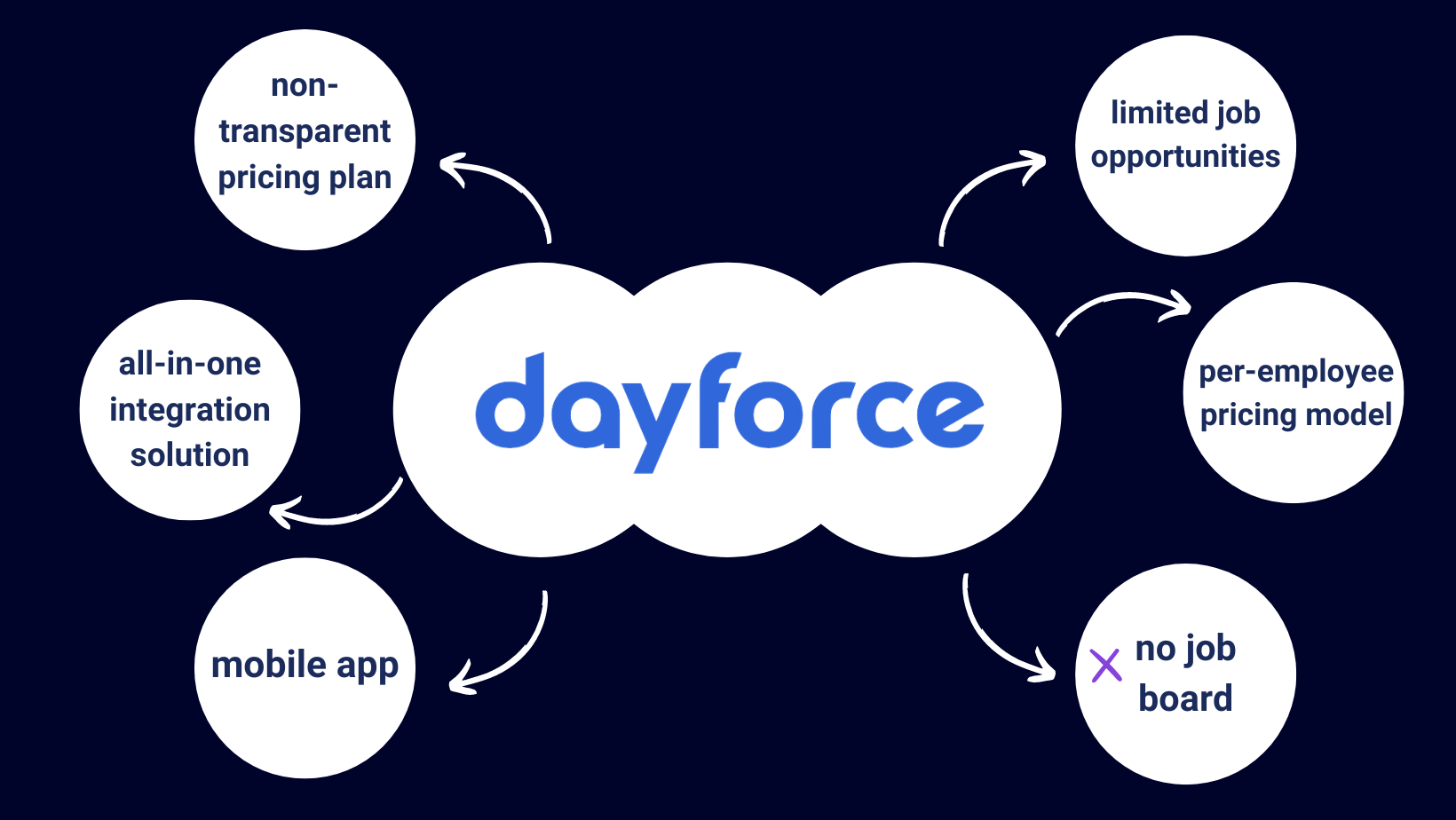
Similar to Harri, Dayforce is also an HCM (Human Capital Management) platform that comes with various useful features specifically tailored for employers to manage their organizations.
For Employers
Dayforce is a great tool for employers who are looking to integrate all of their systems in one place.
This is where they can manage some major aspects of their business, including things like analytic reports, HR and payroll.
They also offer sections like Dayforce Talent, Flexwork and Wallet.
Unfortunately, when it comes to payment, their prices are not openly displayed on their website.
Instead, you’d have to contact their sales team to either get a demo or get a couple of your questions answered.
One source claims that Dayforce charges $22 to $31 per employee.
For Job Seekers
Unlike 100Hires, Dayforce comes with a designed job board.
To use this feature, all you have to do is sign up and create an account for free.
However, given that this platform is not tailored for hospitality careers, there aren’t a lot of job opportunities available here.
Pros:
- All-in-one integration solution for employers
- Free account creation for job seekers
Cons:
- Non-transparent payment system
- Not tailored for hospitality
- Per-employee pricing model
- Limited job opportunities
6. Culinary Agents
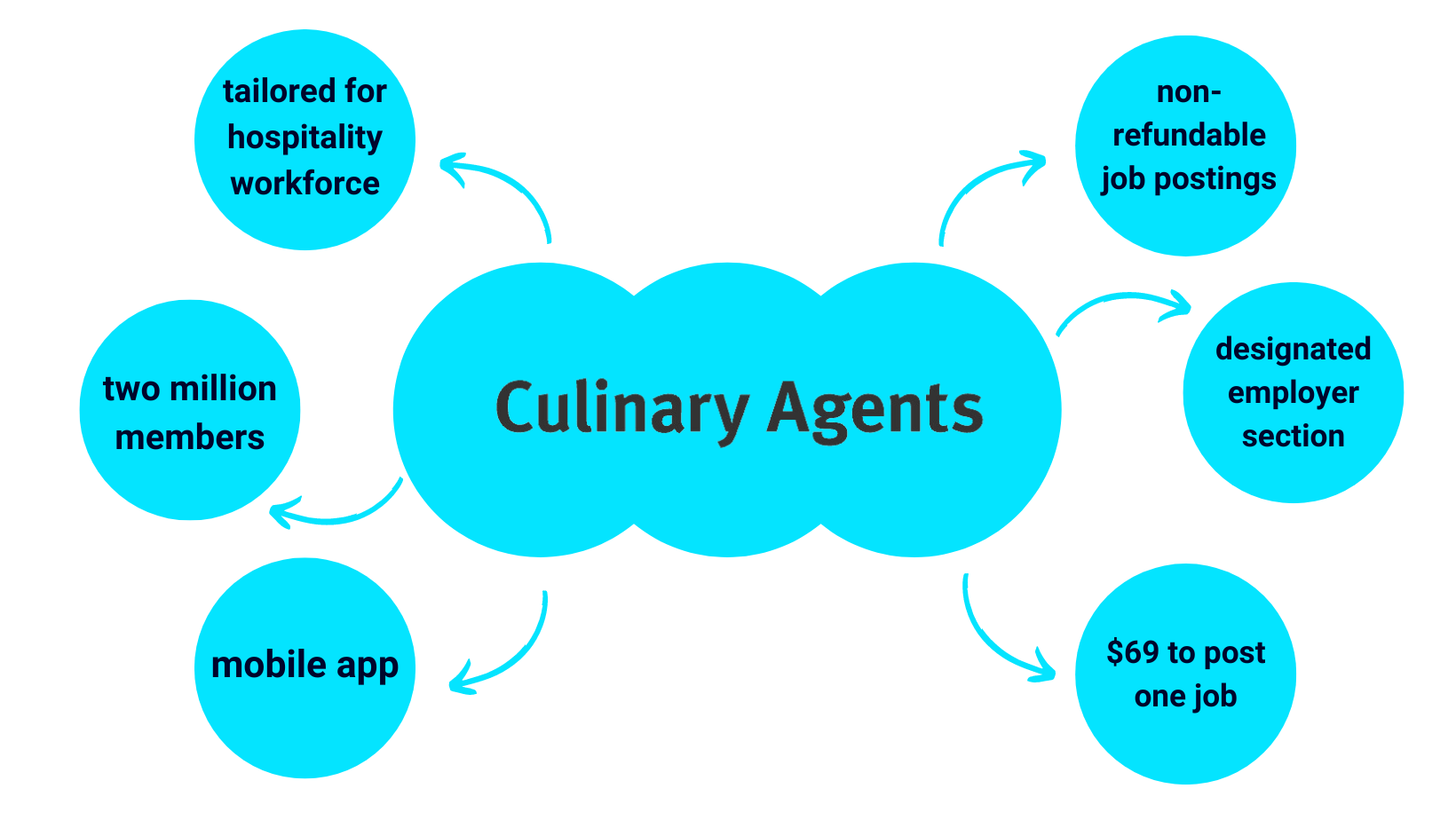
Culinary Agents is a website where hospitality professionals can both post and search for jobs within the service industry.
The platform has amassed a large user base of around two million members.
For Employers
The website comes with a designated section for employers where you can use their resources to find and hire the right candidates for your establishment.
Once you sign up with Culinary Agents, you’ll have access to their tracking tools, pre-screening questions and customizable design messages.
Even though it’s possible to sign up for free, you’ll have to pay up to $69 per job posting.
If you’re looking to save, you could also opt out of a monthly subscription that costs $150.
That way, you’d get to save $126 and post four jobs for the price of two jobs.
Just bear in mind that job postings are non-refundable and they also expire after six months.
For Job Seekers
If you’re a hospitality professional looking for a job, then you’re going to love Culinary Agents.
They offer plenty of jobs in the sector across 30 major cities in the U.S., including Los Angeles, Washington, New York and others.
However, since they’re focus is largely on America’s tourist hub, you won’t find many job listings in smaller cities.
Another great thing is that you can create a profile free of charge.
They also offer a mobile app, which makes it very convenient for the majority of users.
However, the app comes with an average rating of 3 out of 5, indicating there might be some room for improvement.
Pros:
- A fairly large user base of two million members
- A dedicated section for employers
- Tailored for hospitality professionals
Cons:
- Non-refundable job postings that expire after six months
- A single job posting costs as much as $69
- Tailored for job seekers in big cities
- Mobile app with an average rating of 3/5
7. Qwick
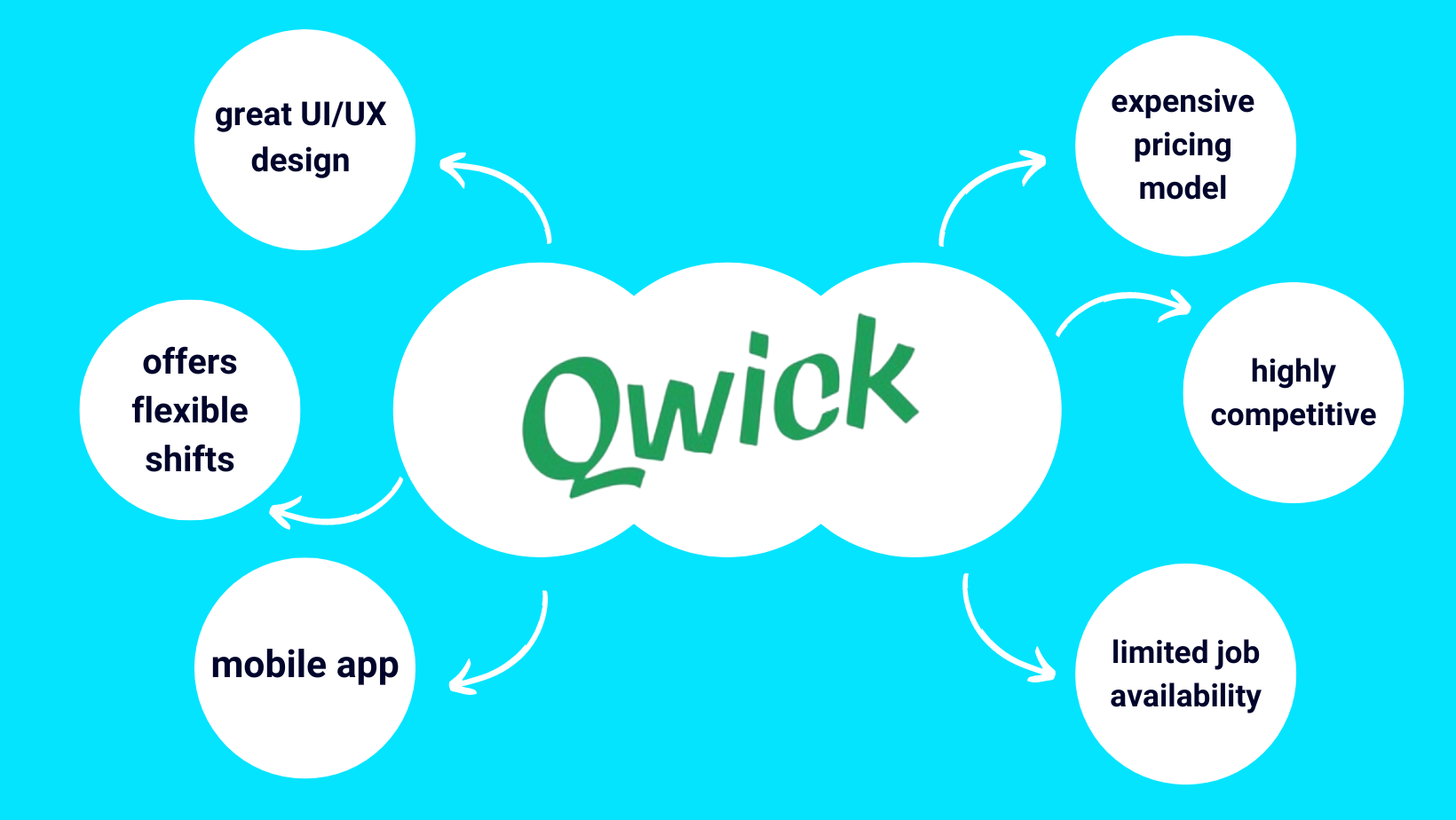
Qwick is another popular platform that offers jobs to hospitality workers.
The best thing about this website is that it offers flexible schedules at various establishments in the U.S.
For Employers
As an employer, you can use Qwick to post a whole day or half-day shift in just a couple of minutes.
Their UI/UX design is intuitive and it’s incredibly easy to navigate the platform.
To make it easier to find what you’re looking for, they’ve divided their landing page into a couple of sectors.
When it comes to Qwick’s payment system, they are not similar to other competitors on the market.
They charge 40% on top of the job seeker’s hourly pay. This makes it one of the most expensive pricing models on the market.
For Job Seekers
Another great thing about Qwick is that it comes with a mobile app. That way you can apply for jobs on the go.
This is not only a great time-saver but it can also help you increase your chances of actually seeing the job listing (and eventually getting hired).
However, it’s important to note that the hospitality sector is slowly recovering from the pandemic in 2020.
As a result, the competition in the market is fierce.
Job seekers claim that most of the jobs on Qwick get delisted in a matter of seconds and they end up on a waitlist.
It’s not yet obvious if this is a temporary issue or a permanent one.
Pros:
- Excellent UI/UX design
- Offers flexible shifts
- Comes with a mobile app
Cons:
- Expensive pricing model (40% of the top of the freelancer’s hourly pay)
- Limited job availability
- Lack of feedback from the platform
- Highly competitive
8. Upshift

Upshift has been on the market for about eight years.
Over that time, they’ve positioned themselves as an app that connects professionals in light industrial and hospitality sectors.
For Employers
Unlike other hiring platforms that have been relying on AI to match the candidates with the right job, Upshift has real people vetting candidates.
Another great feature includes posting a job with the employer in full control of the pay.
They also have a dedicated support team that’s assisting their clients 24/7 (and most importantly — no chatbots).
If you’d like to sign up for Upshift, just note that they charge anything from 42-50% on top of the freelancer's hourly pay.
Even though their pricing model is transparent, it’s important to consider how this would influence your budget.
For Job Seekers
With Upshift, workers can look for shifts wherever they want to.
These flexible working hours where the candidate chooses where and how they’ll work, have proven to be extremely popular among the workforce.
To start looking for a job, you can sign up to their app free of charge.
Once you go through the registration process, you’ll have a face-to-face meeting with one of their staff members.
While this might be a plus for employers looking for serious candidates, it’s also a downside for job seekers who are looking for hassle-free ways to get work.
Pros:
- Human-centered recruitment model
- Flexible work scheduling arrangement
Cons:
- Expensive pricing model (42-50% markup on freelancer’s hourly pay)
- A mandatory face-to-face meeting in one of their offices
9. UKG Pro
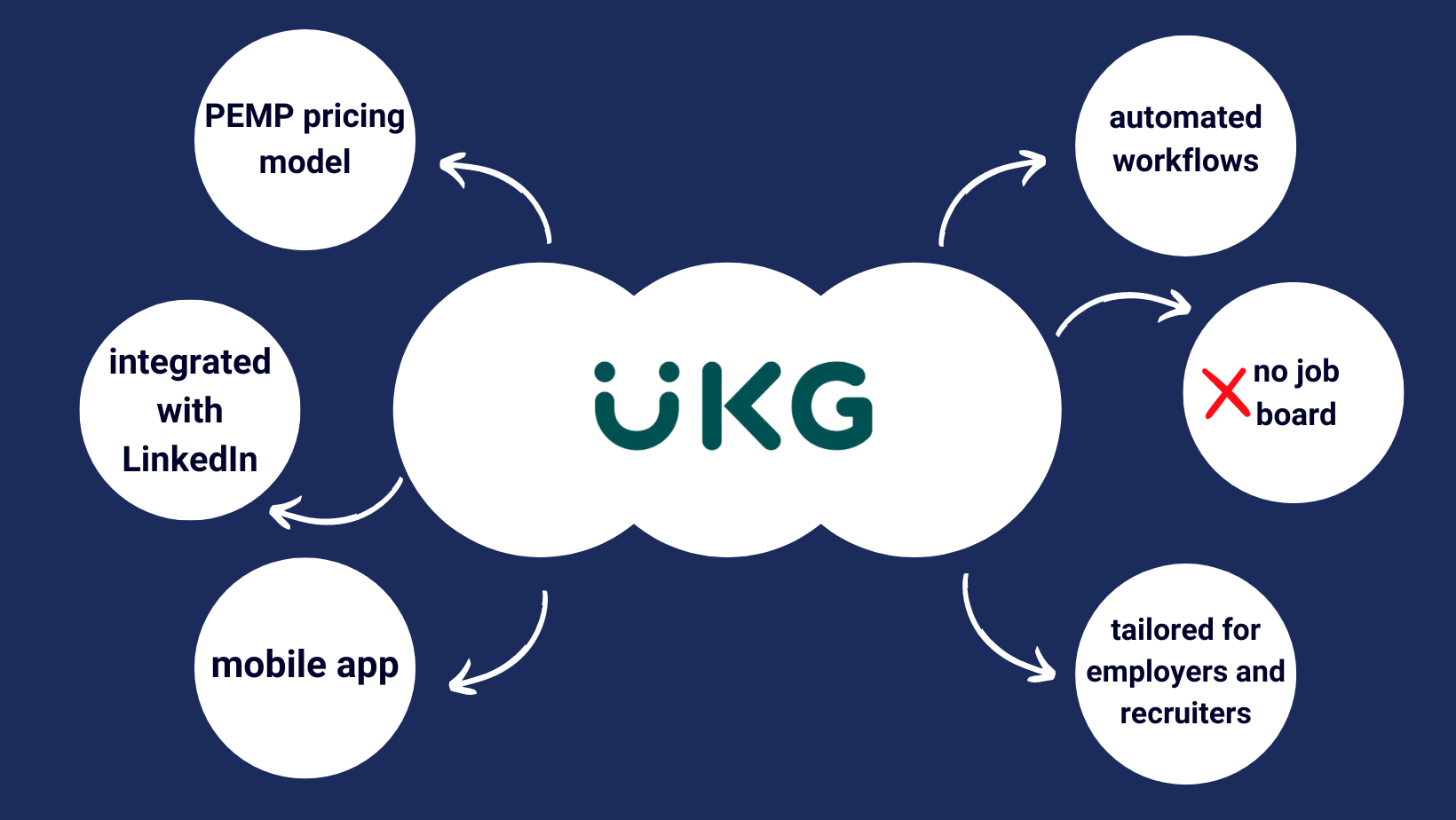
UKG Pro is another HCM platform that’s used for features like payroll management, HR tasks and other automated solutions.
For Employers
As an employer, you can use UKG Pro for $27 to $37 per employee.
You’ll have a variety of tools at your disposal, including automating workflows and growing your talent network.
The platform also offers what they call a “simplified recruiting process” through their integration with LinkedIn.
For Job Seekers
Similarly to other HCM, you won’t be able to create a profile or look for a job.
The only time when you can use this platform is once you get hired and the company invites you to their organization.
This is extremely inconvenient for job seekers who are used to actively looking for opportunities.
Pros:
- Integrated with LinkedIn
- Offers a variety of tools needed to manage a team
Cons:
- PEPM pricing model (per employee per month)
- Doesn’t come with a dedicated job board
- Tailored for businesses and organizations
10. Glassdoor
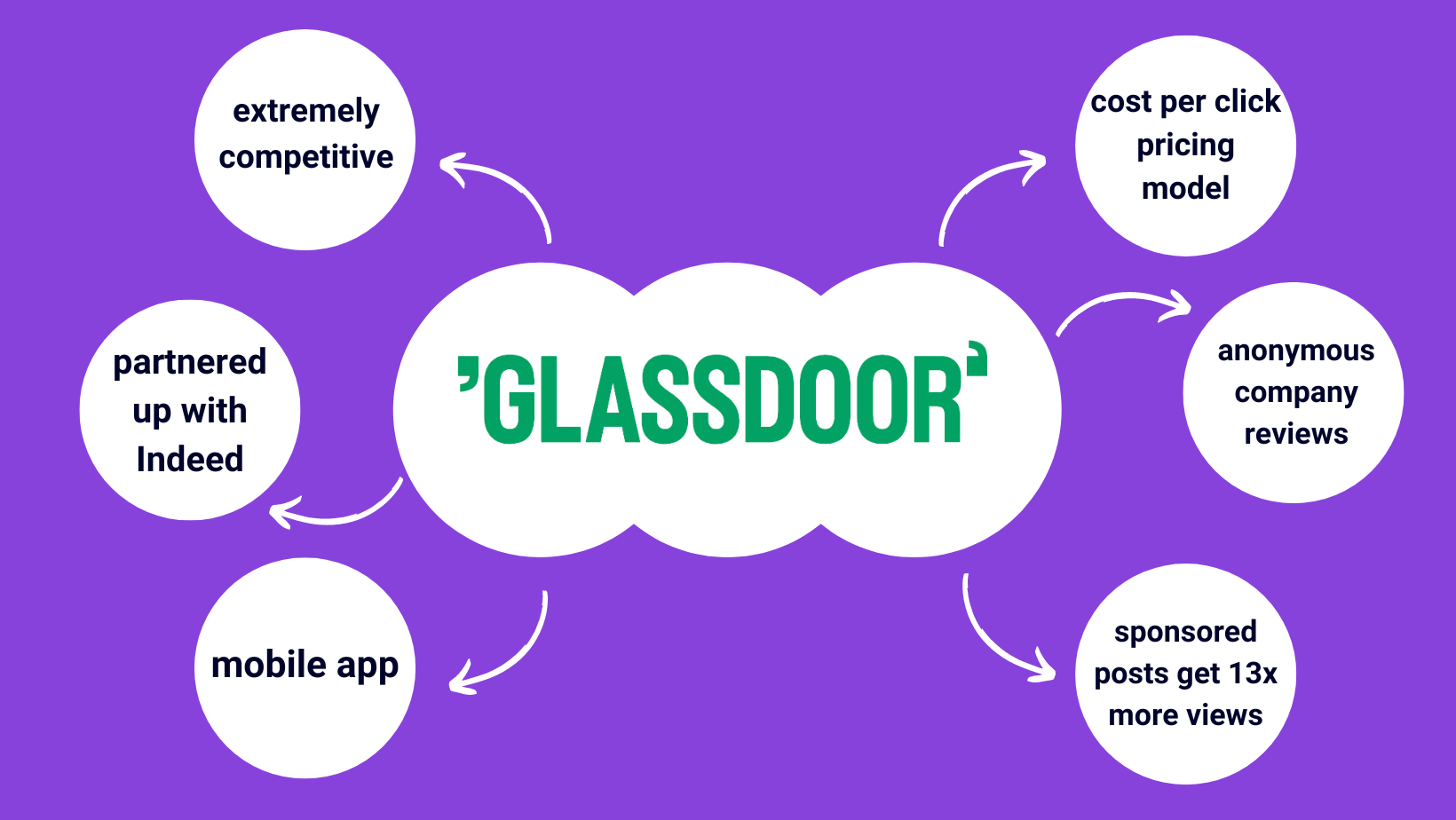
Glassdoor is one of the most popular hiring platforms in the world.
They serve millions of employers and job seekers across the market in various industry sectors.
For Employers
If you’re an employer in the service sector looking to fill a vacancy, your best shot is to post an ad and then sponsor it.
Glassdoor is known for its extremely competitive nature, and unless you do something to stand out, the qualified applicants might not even see your post.
Glassdoor estimates that sponsored posts get 13x more clicks than regular posts.
If you decide to go for this option, the good news is that these posts will also get promoted on Glassdoor’s partner, Indeed.
Both platforms use a cost-per-click model and the price ranges from $0.10 to $5 per click.
For Job Seekers
Apart from looking for jobs in the service sector, most applicants use Glassdoor to check company reviews.
However, given that it’s possible to leave an anonymous review, there have been some real concerns about the authenticity of these comments.
Plus, most of the reviews don’t offer insights into a broader context and can, therefore, lead to misinformation.
Another downside of Glassdoor is the sheer amount of information that can be overwhelming for job applicants.
Unlike other job platforms that have clean UI/UX with little to no additional insights, Glassdoor’s information overload can make the users lose focus easily.
Pros:
- Large user base with more than 64 million members
- Partnership with another major platform (Indeed)
Cons:
- Extremely competitive
- Cost per click model ($0.10-$5)
- Anonymous reviews that lead to misinformation
- A large amount of information on the page
11. LinkedIn
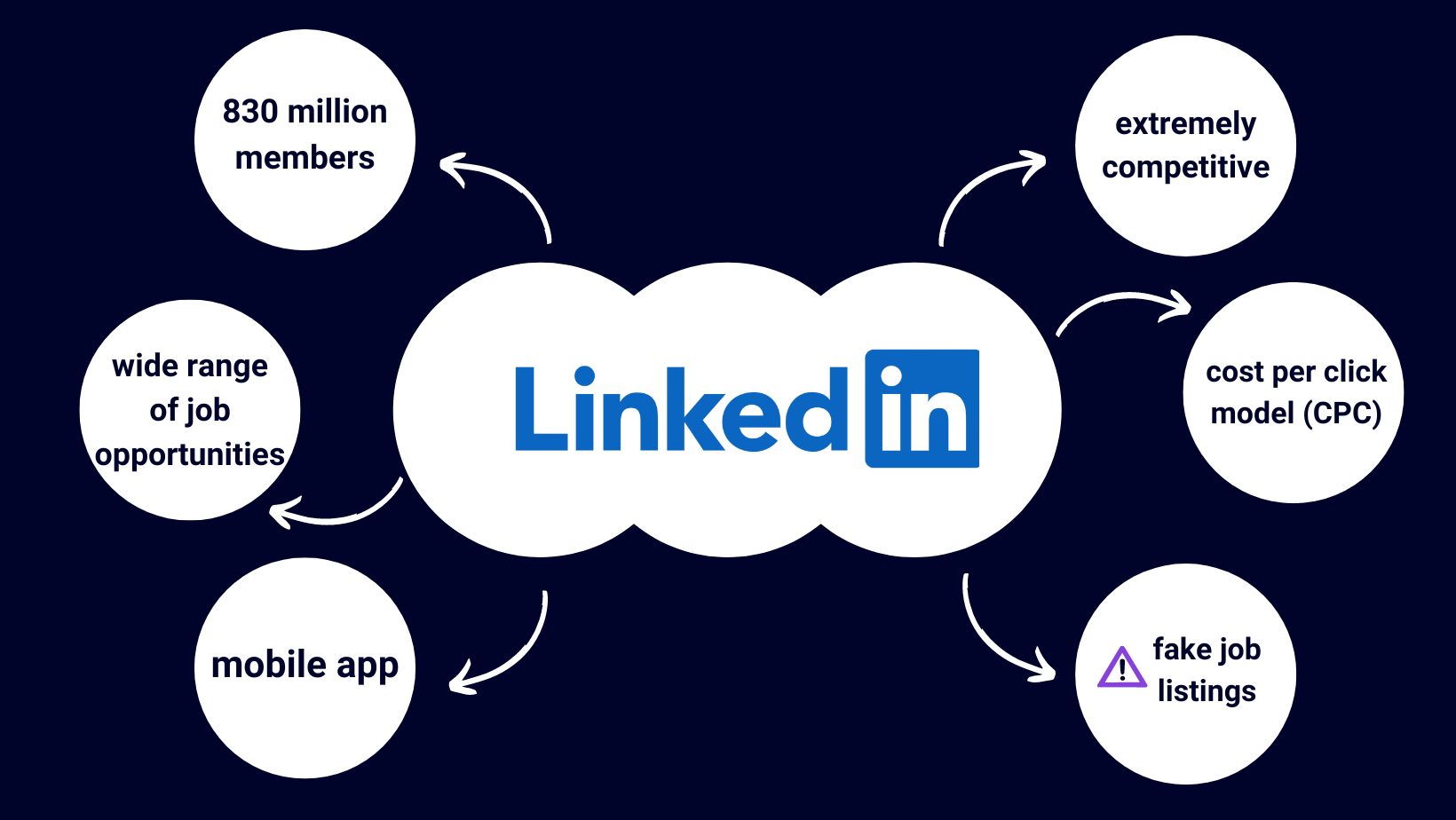
LinkedIn is not only a hiring platform — they are also the perfect place for professionals to network with like-minded individuals.
They have options that others don’t offer, such as posting photos and sharing articles.
For Employers
It goes without saying that LinkedIn is one of the most competitive platforms on the market.
Even though they are not specifically made for hospitality, there’s a wide range of job postings, from junior to senior positions.
However, given how competitive LinkedIn is, you’d have to come up with some creative ways to stand out among a million other job listings.
While you can post one job for free, LinkedIn will charge you for the second job.
From reading up on various sources around the web, it can cost as much as $2,000 per year for each additional job slot you get on LinkedIn.
For Job Seekers
The best thing about LinkedIn is the vast networking opportunities.
You will be able to connect with anyone instantly by sending them a friend request or simply commenting on their article.
To appear more professional, you can also enhance your profile and make it stand out for employers and recruiters.
LinkedIn's biggest downside is the overwhelming competition.
You’ll quickly notice that a single job posting can easily accumulate hundreds of applicants in a matter of minutes.
In addition, you might encounter numerous fake listings, which can waste your time.
This combination makes it hard for most LinkedIn members to find genuine job opportunities.
Pros:
- Large user base with 830 million members
- Wide range of job opportunities
- Networking opportunities
Cons:
- Extremely competitive
- Cost per click model (CPC)
- Fake listings
Looking To Hire Top Hospitality Talent?
OysterLink connects you with a growing community of over 150,000 professionals ready to take the next step in their careers.
With their industry-tailored job description templates and targeted reach, it’s a smart way to attract standout candidates and make your hiring process smoother.





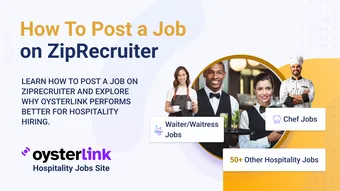

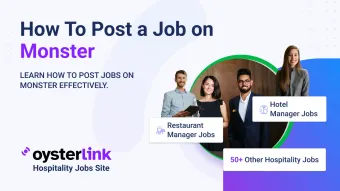
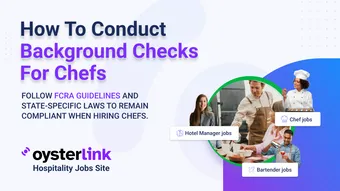


Loading comments...